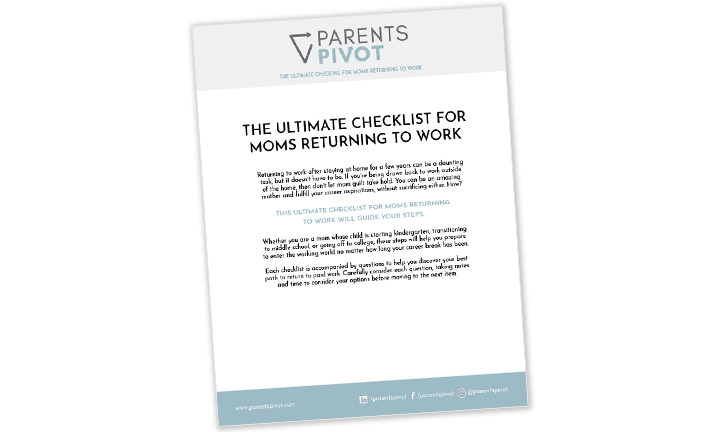Baby’s first steps. Cuteness overload during playdates. Mid-day snuggles. First words.
Soccer practices. Medical appointments. After school homework sessions.
When deciding to return to paid work after having a baby, or after being at home with your children for years, there can be major FOMO: fear of missing out. When this happens because mom is returning to paid work after a career pause, it’s called “Mom’s fear of missing out.” Or at least, that’s what I like to call it. It’s very real. Very stressful. And can bring endless tears to the best of us.
We don’t want to miss one tiny little thing when it comes to our children. When we leave the home for work, whether part-time or full-time, the reality is that it will happen. So how do you reconcile your desire to return to paid work with your longing to be with your precious little one around the clock?
4 Ways To Address Mom’s Fear Of Missing Out
There are a few simple things you can do to cultivate your career, while also finding fulfillment in your role as a new mother.
Adjust your expectations. When you return to paid work, you will miss out on things. It’s inevitable. Acknowledging that, yes, you will miss things here and there is the first step to overcoming FOMO. Then, consider all that you will be gaining by working outside the home. Here are my favorite two examples:
According to Harvard Business School, children of working parents grow up to be high achievers and are overall happier. You are setting your little one up for success by returning to paid work!
You’ll be regularly engaging in adult conversations and tasks, stimulating your mind.
What happens when you miss out? Since missing out will happen, you need a game plan for what to do when it does. A few suggestions are:
Decide ahead of time that you will celebrate with your child when you hear the story about something positive that happened. Give them a hug, smile, and let them know you are proud of them!
Celebrate big milestones by doing something special together. Depending on the age of your child, this could be a small treat, an outing to a favorite playground or ice cream shop, or even just a dance party in the living room!
Ask your childcare provider to take photos or short video clips throughout the day and share them with you. Some daycares even have cameras set up so that you can log in and watch the fun whenever you are available.
Commit to gratitude. It’s easy to look at the downside of missing out - you can’t recapture that moment you missed. Choosing gratitude will not only help you to stay positive, it will also help your child to be positive as well. Make a list of all that you are thankful for: dependable and trustworthy childcare, a healthy and happy child, opportunity to work at a great company and build strong professional relationships, etc. It’s also helpful to view the childcare provider as a way to teach your child that they have more than just their parents to count on to care for them.
And don’t forget… gratitude can also help your career! Mom’s fear of missing out isn’t as strong when laid beside a long gratitude list. If your child is talking, you can also ask them what they are thankful for and add it to the list.
Take care of yourself. Self care is important for both your physical and mental health. Don’t underestimate the power of good sleep habits, healthy eating, and time to rest in the face of FOMO. Here is a long list of self care activities to get started. Good self care habits will help you to stay positive and feeling good about your decision to return to paid work, even if you miss out on a few things at home.
Returning To Work With Confidence
Once you make the decision to return to work – and have overcome the fear of missing out – it’s time to put yourself out there in the job market! Return with confidence through 1:1 or group career coaching that will not only launch you to the top of the applicants pile, but also instill the confidence you need to reach your career aspirations.
Whether you are looking for a new job in the field you’ve worked for years or transitioning to something new, Parents Pivot is here to make sure you successfully return to paid work. Learn more about the Parents Pivot Parent’s Roadmap to get started.









